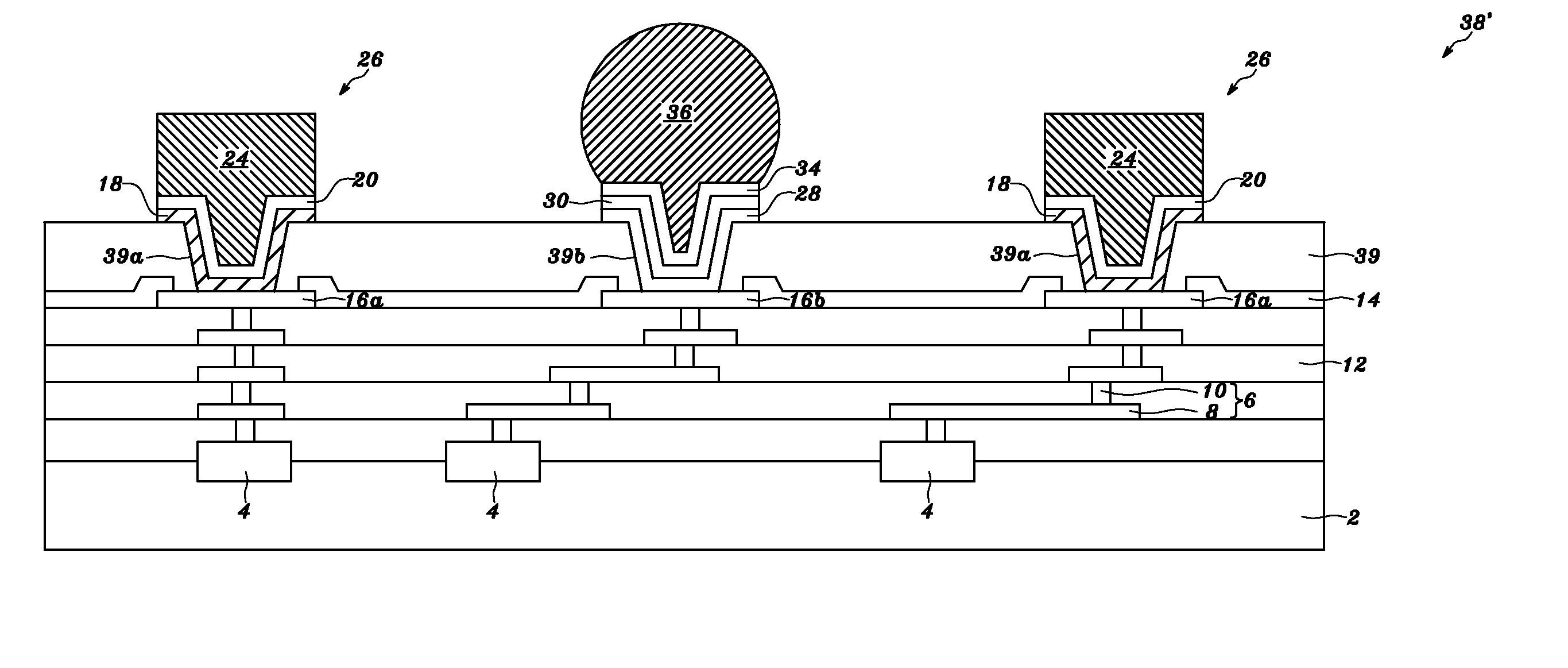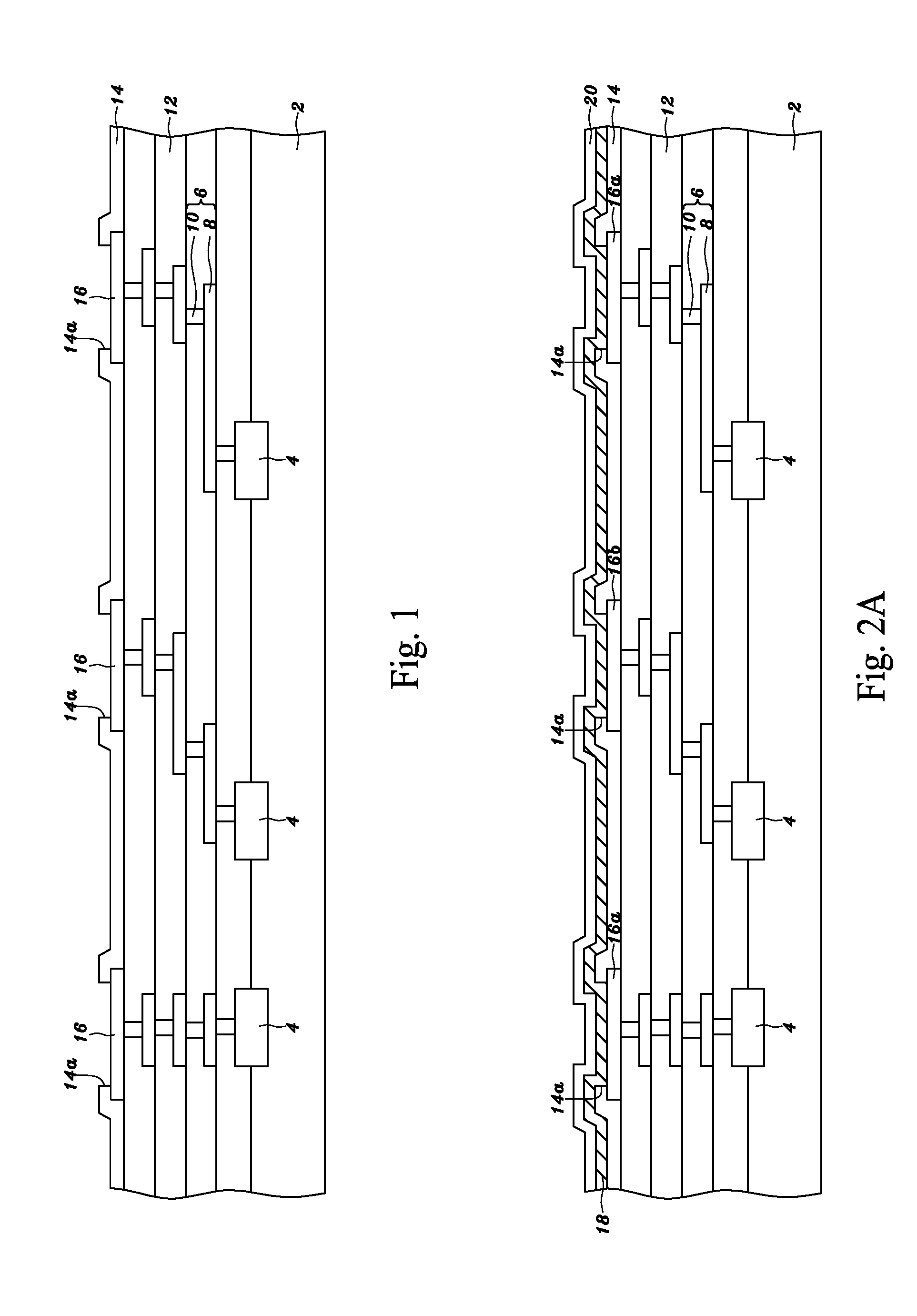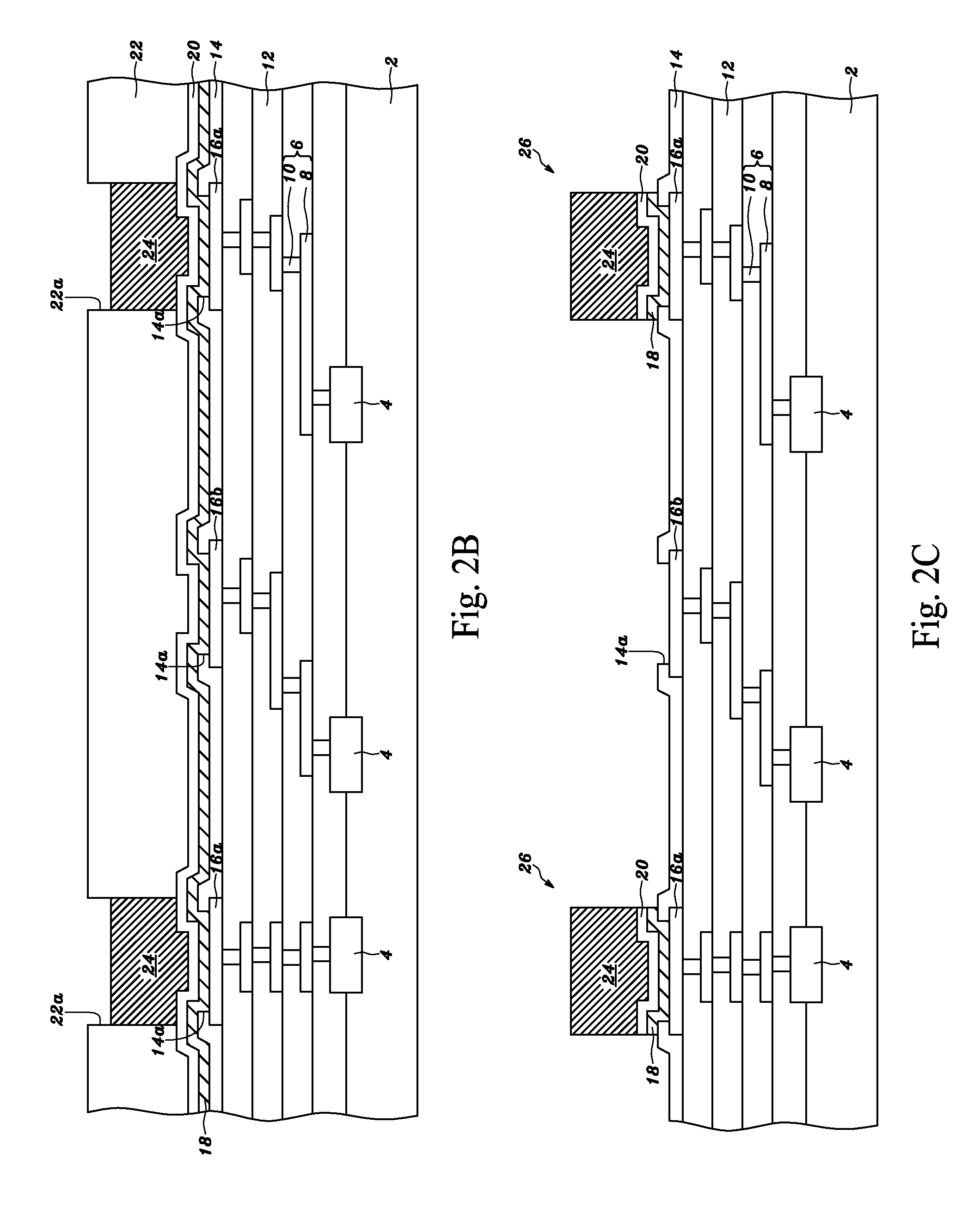Chip package and method for fabricating the same
a technology of chip and aluminum pad, applied in the field of chip package, can solve the problem of easy damage to the original aluminum pad
- Summary
- Abstract
- Description
- Claims
- Application Information
AI Technical Summary
Problems solved by technology
Method used
Image
Examples
embodiment 1
[0047]FIG. 2A to FIG. 2H are schematic cross-sectional views showing a method for forming a tin-containing metal layer or bump and a metal pad or bump over a semiconductor wafer.
[0048] Referring to FIG. 2A, the bonding pads 16 comprise multiple first bonding pads 16a (only two is shown) and multiple second bonding pads 16b (only one is shown). An adhesion / barrier layer 18 having a thickness of 0.01 and 3 μm is formed on the passivation layer 14, on the first bonding pad 16a exposed by the opening 14a, and on the second bonding pad 16b exposed by the opening 14a. The thickness of the adhesion / barrier layer 18 is preferred to be between 0.01 and 1 μm. The material of the adhesion / barrier layer 18 may include titanium, tungsten, cobalt, nickel, titanium nitride, a titanium-tungsten alloy, a nickel-vanadium alloy, aluminum, chromium, copper, gold, protactinium, platinum, palladium, ruthenium, rhodium, silver, or a composite of the above mentioned materials. The adhesion / barrier layer 1...
embodiment 2
[0077] Embodiment 1 can apply to a RDL (Re-Distribution Layer) or an interconnecting trace. Below is to be described an embodiment, wherein a RDL and an interconnecting trace are simultaneously formed over a semiconductor substrate. However, the present invention also includes the case: only a RDL or interconnecting trace is formed over a semiconductor substrate, and a metal pad or bump and a tin-containing metal layer or bump are then formed on the RDL or interconnecting trace.
[0078] Referring to FIG. 3C, a metal trace 40 functioning as a redistribution layer (RDL) is formed over a passivation layer 44 and connected to a bonding pad 46 exposed by an opening 44a in the passivation layer 44. A metal trace 42 functioning as an interconnecting trace is formed over the passivation layer 44 and connects multiple of to the bonding pads 46 exposed by the openings 44a in the passivation layer 44. Refer to the foregoing description of the passivation layer 14 and the bonding pad 16 for the ...
embodiment 3
[0107]FIG. 5A to FIG. 5H are schematic cross-sectional views showing a method for forming a tin-containing metal layer or bump and a metal pad or bump over a semiconductor wafer.
[0108] Referring to FIG. 5A, after the adhesion / barrier layer 18 shown in FIG. 2A is formed, a seed layer 20′ is formed on the adhesion / barrier layer 18, wherein the seed layer 20′ has a thickness of between 0.005 and 10 μm with a preferred thickness of between 0.01 and 2 μm. The seed layer 20′ may be formed by a sputtering method, a vapor deposition method, an electroplating method, an electroless plating method or a PVD method. The seed layer 20′ is beneficial to electroplating a metal layer thereon. Thus, the material of the seed layer 20′ varies with the material of the succeeding metal layer formed on the seed layer 20′. When a copper metal layer is to be electroplated on the seed layer 20′, copper is a preferable material to the seed layer 20′. When a gold metal layer is to be electroplated on the see...
PUM
| Property | Measurement | Unit |
|---|---|---|
| thickness | aaaaa | aaaaa |
| thickness | aaaaa | aaaaa |
| thickness | aaaaa | aaaaa |
Abstract
Description
Claims
Application Information
 Login to View More
Login to View More - R&D
- Intellectual Property
- Life Sciences
- Materials
- Tech Scout
- Unparalleled Data Quality
- Higher Quality Content
- 60% Fewer Hallucinations
Browse by: Latest US Patents, China's latest patents, Technical Efficacy Thesaurus, Application Domain, Technology Topic, Popular Technical Reports.
© 2025 PatSnap. All rights reserved.Legal|Privacy policy|Modern Slavery Act Transparency Statement|Sitemap|About US| Contact US: help@patsnap.com



